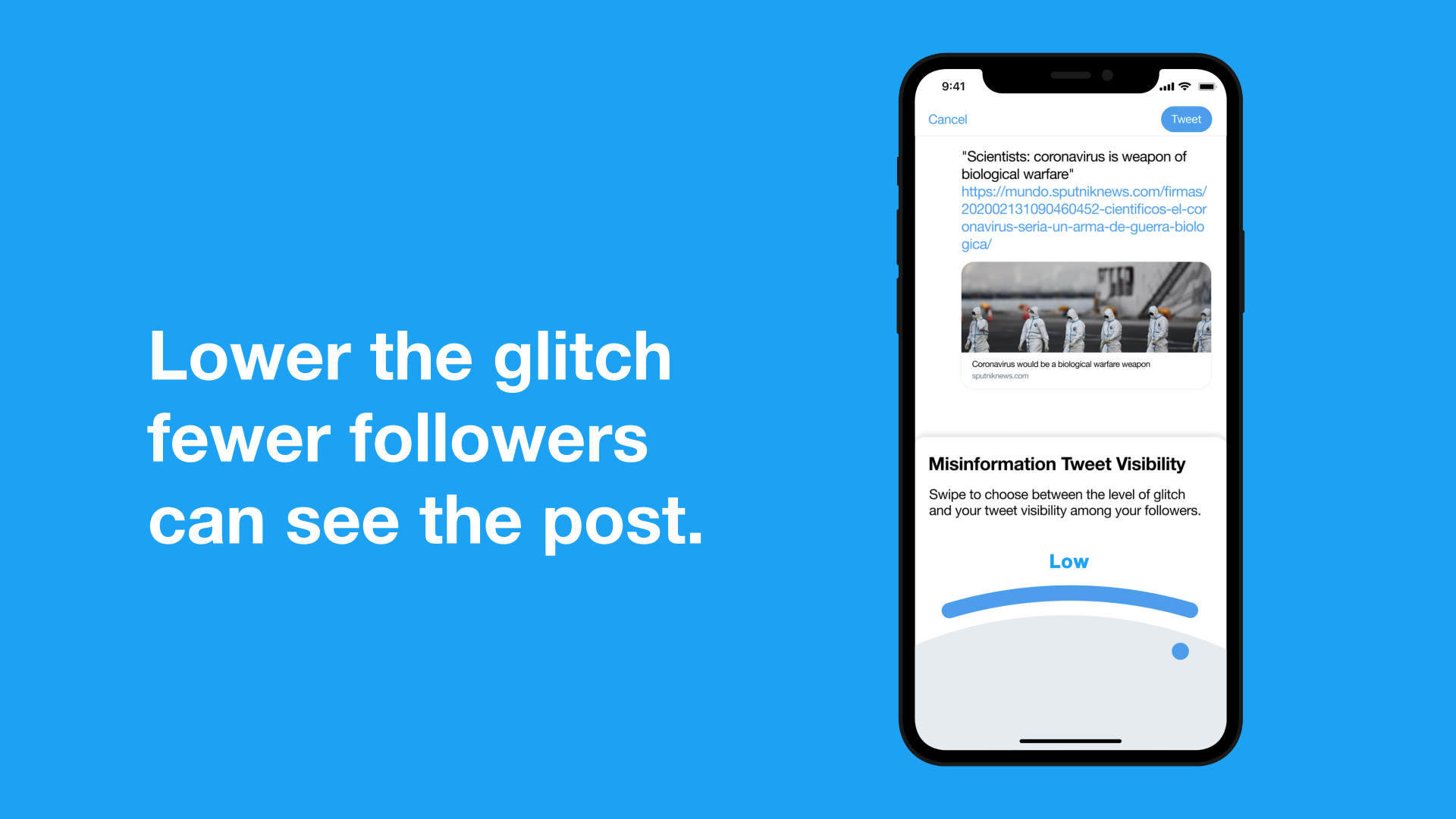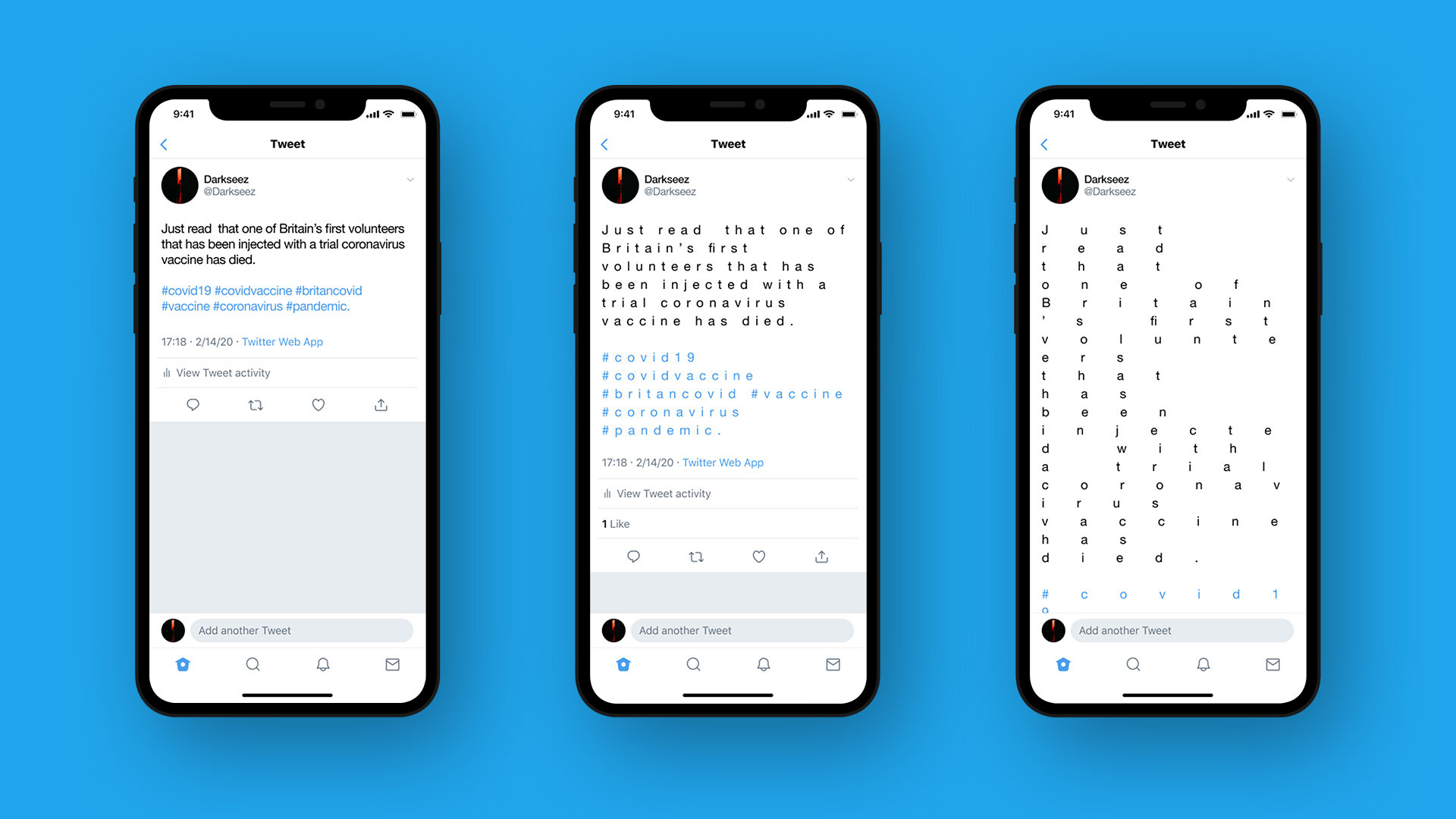The aesthetics of misinformation
THE CHALLENGE
‘The Aesthetics of Misinformation’ was during a course project called Fluid Assemblages.
This project looks into the relationship between Misinformation and freedom of speech in the space of social media. Social media has become the most relevant and accessible way people access information and news. In this time of excessive availability of information, we are struck by massive amounts of misinformation that we come across. This information may spread intentionally through trolls, fake accounts, bots, or even unintentionally through naive people who use various digital platforms. Through this project, I have tried to understand the situation of misinformation in social media platforms and explore alternative ways through which we can understand and design for Misinformation to create a safer and informed society.
THE OUTCOME
During this project, I chose to explore how we, as designers, can play around with misinformation to create new forms of expression that might create an impact on how we view information. This project focuses on two explorations in developing new forms of Aesthetics of Misinformation that provoke friction and reflection.
COURSE
Fluid Assemblages ( 5 Weeks), Umeå Institute of Design, Sweden, 2020
TEAM
Zena Corda (Individual Project )
ROLE
Interaction Design, Film Making, Graphic Design. Motion Graphics
Illustration: Eniola Odetunde/Axios
Modified by Zena Corda
An exploration of the aesthetic qualities of Misinformation to create new experiences of information that provoke friction and reflection to think about the quality of information that we are accessing.
EXPLORATION 1- Visualising the noise that Misinformation can have
Social media is built on the foundation of freedom of speech and expression, but sometimes, because of misinformation, information becomes like noise, cluttering our interfaces, causing confusion and distress. This exploration challenges the foundation of freedom and sets boundaries for users. What if you could post what you wanted, but it came with a consequence? Platforms can enable you to post the content of your choice, but that doesn’t mean the harmful content needs to get the publicity you desire.
This exploration is done in the form of a new product launch called “Glitch” by Twitter.
“What if you could experience the noise in your information and had to decide between tuning out the noise in your post and the amount of visibility your post can have?”
HOW DOES IT WORK?
Due to the Misinformation crisis, Twitter launched a new feature called “Glitch”. Once the system detects misinformation, it creates a distortion effect on the post. The user is then provoked to negotiate between the clarity of the post and the amount of visibility the post will have among his/her followers. The lower the distortion, the fewer people have access to the post. The higher the distortion the post get shared with all the followers. This distortion effect would enable users to see the noise in their feed and recognize the noise that misinformation actually is.
RESPONSE TO THE NEW FEATURE LAUNCH
EXPLORATION 2 - What if misinformation started to look meaningless?
Inspired by the concept of "Semantic Satiation”, saying a word over and over again makes it sound meaningless, or it starts to sound like random sounds. I took this concept and applied it to Misinformation. As social media channels have become the primary source of news and information for people, we must find new ways to authentically express information that harms people. To express this idea, Twitter launches a new update that protects its users when they come across misinformation.
How might we give words less power than it currently has especially if the goal is to create harm, havoc and deceive people?
HOW DOES IT WORK?
As a Misinformed post goes viral, the post starts to distort, sentences slowly start to become words, and the world slowly separates to become letters, to the point that it no longer looks like the original post, even though it is. This will enable people to understand that the image they might be looking at may be problematic or even enable them to ignore it. Ultimately, this ignorance would also give lesser power and importance to people posting such information. Information is only powerful when there is meaning and emotion attached to it, but if we strip it of its meaning, then we take away its power.
CONCLUSION
The idea of these explorations is not to provide a concrete solution for a complex topic, but rather to open up and provoke conversations about how speech and information should be shared online, and what the consequences are that need to be developed if people in society can get hurt.
Some of the questions that were provoked through these explorations
Does freedom of speech mean you have to be entitled to popularity and publicity by enabling these ideas to go viral? As any publicity, good or bad, is still publicity, and maybe that’s the power that misinformation shouldn’t have.
What are the boundaries of freedom of speech that might need to exist on social media platforms?
How might aesthetic qualities of information become a material that can be explored with?
Design Methods and Explorations
EXPLORATION OF DISCOMFORT THROUGH ROLE-PLAY AND PROBES
I started looking at the core values of what misinformation is and just tried to play around with what speech could mean in different situations. I moved away from the human perspective and looked at speech as an “agent”. In doing this, I started to work with different kinds of expression that speech can and the emotions speech should elicit. Embodying those situations gave me a better understanding of the kind of expressions I could translate into a digital medium and made my concepts even clearer to me. Going away from the digital context and focusing on the core values of the topic enabled me to be more explorative.
If the Aim of Misinformation is to spread “Chaos” and “Discomfort” then, How might people that spread misinformation perceive this experience of “Discomfort” through their own posts, creating friction and reflection?
REFLECTIONS AND LEARNINGS
I have found a new comfort in addressing solutions as an exploration, an opportunity, a point of view. This approach has enabled me to realize that I may not have all the answers or the right ones, but I have something valuable to offer with a perspective, and that can also be a valuable solution.
This project has enabled me to look at situations as an explorer rather than being oriented towards a solution or even address situations that we can provoke to open discussion and work together to develop “What ifs,” rather than “This is it”.
Recognition
Conversation on Digital Ethics with RISE
RISE RESEARCH INSTITUTES OF SWEDEN. RISE is Sweden's research institute and innovation partner. RISE hosts public conversations on Digital Ethics, in collaboration with Umeå Institute of Design and Eindhoven University of Technology, to raise awareness and create knowledge in this area.
My project was selected to be presented during this event, followed by a discussion with Joshua Bronson, a researcher at RISE.








